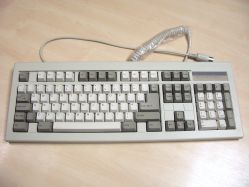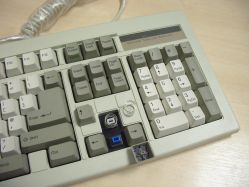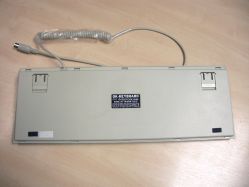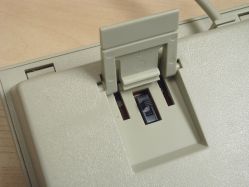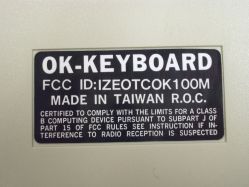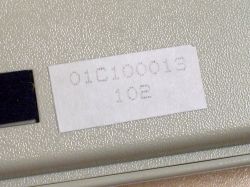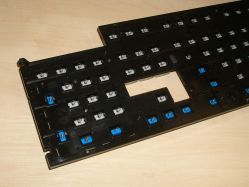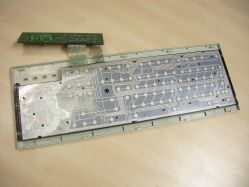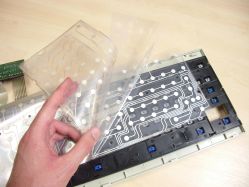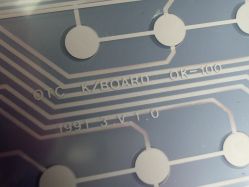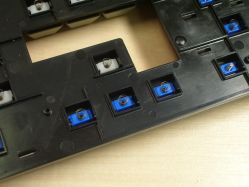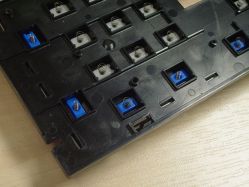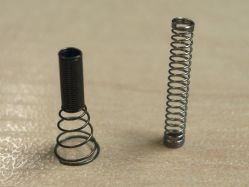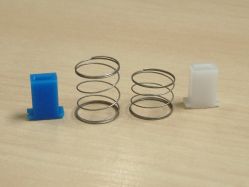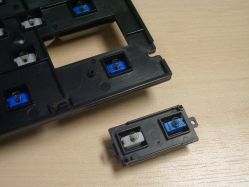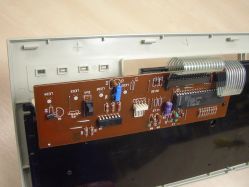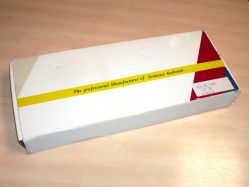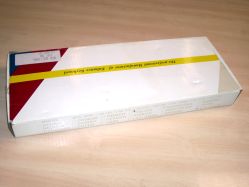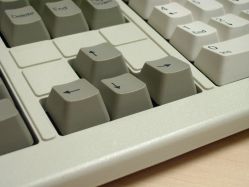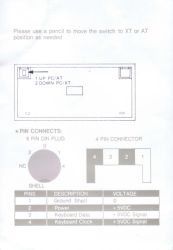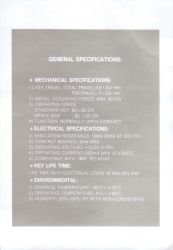Oriental Tech OK-100M
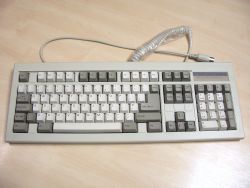 | |
| FCC ID | IZEOTCOK100M (1991) |
|---|---|
| Branding | None |
| Manufacturer | Oriental Tech |
| Product family | Oriental Tech OK-100 series |
| Features | Variable weight |
| Layouts | Asian 101 |
| Keyswitches | Oriental Tech spring-over-membrane |
| Keycaps | Cylindrical Alps mount double-shot |
| Interface | XT/AT switchable |
| Introduced | ca. 1991 (FCC registration) |
OK-100M is a progressive-rate spring-over-membrane keyboard in the Oriental Tech OK-100 series.
Description[edit | edit source]
OK-100M uses double-shot Alps mount Tai-Hao TI series keycaps over sliders. The keyboard is XT/AT switchable.
To cater for both US and European layouts, a separate slider module carries the sliders for the keys to the left of Z/Y: one for US layout (long left shift), and two for European layouts (smaller left shift with an additional key to its right). The underlying membrane has three contact positions accordingly.
According to the box, the OK-100 series was sold in the following layouts: Arabic, Belgian, Canadian, Chinese, Danish, Dutch, French, German, USSR, Italian, Korean, Latin America, Norwegian, Portuguese, Spanish, Swedish, Swiss, UK and US.
Characteristics[edit | edit source]
The keyboard characteristics vary; the following characteristics have been noted on one OK-100M keyboard, and they may not apply to all keyboards:
Variable weighting[edit | edit source]
Various switches use longer return springs, to give them more resistance. These include keys such as control and shift — generally, keys around the side and bottom edges. Broadly, these use blue sliders instead of white sliders, but slider colour does not appear to be completely consistent.
The OK-100M leaflet claims 60±20 cN for standard keys, and 90±25 cN for the space bar, with an initial force of 30 cN. The actual feel of the switches is significantly lighter than 60 cN, with a simple coin-stacking test suggesting around 45 cN for the normal keys. One could also presume that all the other heavy keys use the same nominal 90±25 cN switches as space bar.
Different membrane springs[edit | edit source]
The same keyboard can have both parallel (cylindrical) and flared membrane springs (the springs inside the sliders that press down on the membrane sheets). No reason for this is apparent.
Gallery[edit | edit source]
UK layout[edit | edit source]
-
Front
-
Switches and keycaps
-
Rear
-
XT/AT switch
-
Label
-
Serial number label, with key count ("102")
-
Slider plate detail
-
Membranes
-
Membrane layers
-
Membrane legend
-
Inconsistent sliders
-
Flared and parallel membrane springs
-
Membrane springs
-
Return springs
-
ISO module
-
Controller board attaches to back of membrane assembly
-
Box
-
Rear of box showing list of possible models and layouts
-
Sticking key; for a NIB keyboard, this indicates a manufacturing defect
Leaflet[edit | edit source]
-
"Front" with XT/AT instructions and connector details
-
"Rear" with specifications
